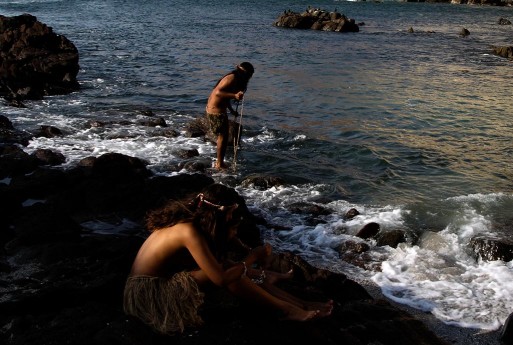When most people hear the word mummification, they probably think of Ancient Egypt. They probably recall the Egyptian kings, their pyramids and their golden sarcophagi. But few people consider—or even know about—the Chinchorro people and their mummification practices. And why should they? Because the Chinchorro mummies predate their Egyptian counterparts by more than 2,000 years. Yes, with their earliest mummies dating back as far as 5000 BC, the Chinchorro may have been the first in human history to experiment with embalmment. Whereas the Egyptians mummified only their royalty, the Chinchorro mummified everyone. The process was an essential part of their burial practices.
Even though their mummies have survived to reveal their burial practices, we still don’t know much about the Chinchorro people. Much of their culture and beliefs remain mysterious and open to conjecture or hypothesis. We do know that they lived in small groups along the western coast of South America, near the border of Chile and Peru. Though mostly sedentary, they may have been slightly nomadic in order to follow the fish migrations. Their diet consisted almost entirely of fish, and their name “Chinchorro,” created in the 1960s, translates roughly to “fishing boat.” They didn’t produce any ceramics or fabrics, but instead crafted deft fishing tools out of seashells and cactus needles. Beyond these facts, however, factual knowledge begins to dissolve into the great mystery of who they were.
“Whereas the Egyptians mummified only their royalty, the Chinchorro mummified everyone. The process was an essential part of their burial practices.”
Nevertheless, their mummies are here to tell a part of their story. With 282 mummies discovered, archaeologists have managed to piece together the timeline of this burial practice. The process underwent three major changes in method and style: the black mummies, the red mummies and the bandaged mummies. Painted with manganese, the black mummies were the oldest, marking the beginning of the practice at 5000 BC. The red mummies, painted with red ocher, were prevalent during the peak of mummification at 3000 BC, after which the practice, ending with the bandaged mummies, started to fade away. The exact end of the practice, as well as the end of the Chinchorro people, remains unclear.
“Much of their culture and beliefs remain mysterious and open to conjecture or hypothesis.”
So why did they go through this process with their loved ones? Of course we cannot know, but archaeologist Dr. Bernarndo Arriaza has some very educated hypotheses. Most of which consider Chinchorro mummification “a deeply religious act—a study in devotion.” Perhaps the Chinchorro believed that preserving the body would preserve the soul. Or, since many of the mummies were redecorated, repainted and/or repaired, another theory suggests that mummies were vital connections to the spirit world and afterlife. Another very believable theory suggests that the mummies were simply meant to console bereft family members.
Whatever their purpose or meaning, the mummies show us a cultural tradition can span almost unchanged over thousands of years. They also show us much we have yet to discover about the mysteries of human history. Are there even older mummies still buried somewhere? Given the discovery of Chinchorro mummies, we can readily imagine that some secret is still out there waiting to be found.
More from “Cultural Perspectives”:
- Guatemalan Funeral Traditions
- Blood and Bone Rituals in Ancient Zapotec Burial Rites
- Ohlone Shellmound Buried Beneath the Emeryville Shopping Center

 The Chinchorro Created Mummies Thousands of Years Before the Egyptians
The Chinchorro Created Mummies Thousands of Years Before the Egyptians




 John Mulaney’s “Funeral Planning” on Netflix: No Real Plan
John Mulaney’s “Funeral Planning” on Netflix: No Real Plan

 Composting Bodies Is Now Legal in a Dozen States
Composting Bodies Is Now Legal in a Dozen States














